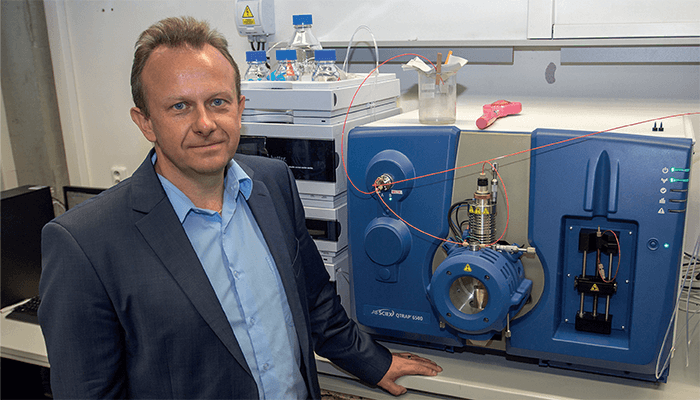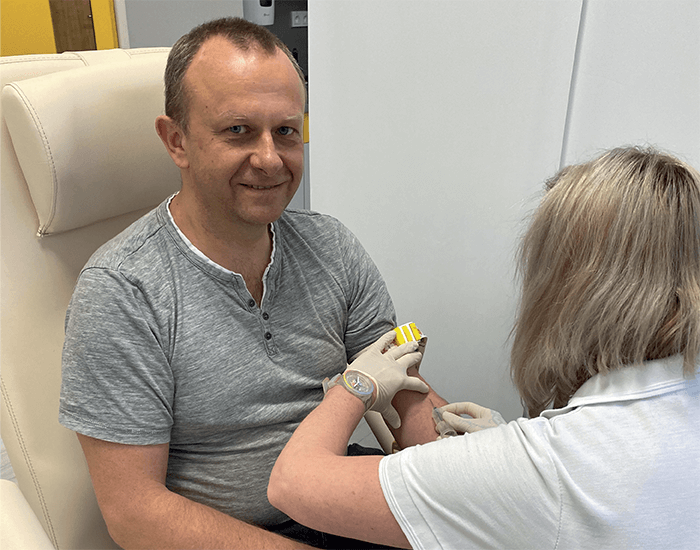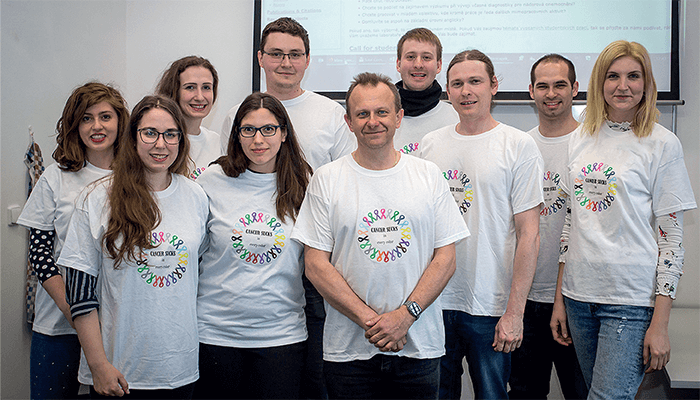High-quality analytical techniques are particularly important for clinical applications…
That’s right. Clinical applications have rather special requirements for the quality of the data provided. Robustness and reliability are both essential. The reason is quite obvious – the result of an analytical test applied in the medical environment can have serious consequences. Let us consider a false result of our cancer lipidomic test; a false positive result could cause severe stress for the person receiving incorrect information – and that could have negative health consequences. On the other hand, a false negative test would produce an unfounded sense of security while the tumor may be growing in the body. Both situations are clearly undesirable – but it is impossible to rule them out entirely because all existing medical tests have a certain level of false negatives and false positives. And that’s why we need to develop highly reliable methods with analytical and clinical validation to reduce false results to the lowest rate possible.
How important are lipids in clinical research?
Lipids have many vital functions in cells and the entire organism. In the past, the main known roles were associated with energy deposits and the building material of cellular and subcellular membranes. Currently, we are learning much more about the roles of various lipid classes in signaling – which is very important for many metabolic pathways and cellular processes. Typically, signaling lipids are present in very low concentrations, which makes their analysis difficult. Many researchers have realized the importance of such lipid functions, resulting in enormous growth of the lipidomics field.

How does the lipidomics field compare with the proteomics and genomics fields?
The genomics and proteomics fields have relatively well-established routine methodologies for measurement and data reporting. The lipidomics field is relatively young and so still suffers from some limitations that must be overcome. For example, individual lipidomics research groups use different methods according to their preferences – the nomenclature and data reporting are not yet standardized.
In 2019, the International Lipidomics Society was established to harmonize the field and provide the lipidomic community – and other related scientific communities – with well-defined minimum requirements for sample collection and storage, measurement, identification, quantitation, data reporting, and nomenclature. The broader acceptance of lipidomic measurements in patient care will be realized when different laboratories can routinely report the same concentrations measured on different platforms. We still have a lot of work to do to reach this point!
Compared with genomics, there are some interesting advantages to exploring the phenotype; the lipidome is closer to the function in the omics cascade, so it offers a higher chance of discovering biomarkers of ongoing or early disease in the human body – as already demonstrated for cancer and cardiovascular diseases.

Please briefly describe your method of diagnosing cancer using lipidomics…
Our methodology enables quantitative and high-throughput measurements of lipid concentrations in human blood. We have discovered that the lipid profiles of cancer patients are significantly different from healthy controls. However, these differences in concentration are relatively small – which is why we need accurate and robust methods. Advanced multivariate data analysis tools play an essential role in the whole workflow – as does a certain level of automation.
In terms of instrumentation, my group has introduced ultrahigh-performance supercritical fluid chromatography-mass spectrometry (UHPSFC/MS), which allows high-throughput and robust quantitation of around 200 lipids with lipid species level information – the number of carbon atoms and double bonds in particular molecules. With one UHPSFC/MS system and two operators, we can provide the capacity to measure 20,000 samples per year.
We can also use reversed-phase UHPLC/MS, which delivers lower throughput and a lower level of method automation, but it does provide information on individual fatty acyls. This information is important for the interpretation of the biological mechanism of the observed alteration and slightly improves the accuracy of the detection of cancer patients (at the cost of reduced throughput).
The pattern of most dysregulated lipids is similar for all cancer types studied so far. In short, we see the downregulation of very-long chain sphingolipids with one double bond (ceramides, sphingomyelins, hexosylceramides, sulfatides, gangliosides, and so on) and some lysophosphatidylcholines (mainly LPC 18:2), while some phospholipids and sphingolipids containing shorter fatty acyl chain and less double bonds (typically C16:0, C18:0, and C18:1) are upregulated. It is evident that there is a potential for parallel detection of multiple cancer types because the differences among individual cancer types are relatively small.
When and why did you start exploring lipid profiles for cancer diagnoses?
In 2010, I flew from a conference in Phoenix to another one in Salt Lake City. I started reading the flight magazine – which I had never done before – and to my great surprise, I found a really exciting article on cancer. It got me thinking about my own understanding of tumor growth. It is primarily an uncontrolled proliferation of cells, and the division of a large number of cells in an unusually short time requires the input of an enormous amount of building material for cell membranes – which are indeed lipids. I began thinking that tumor cells must have a different lipidomic composition than normal cells – which was easy to confirm. We continued with the analysis of blood and other body fluids, and we observed a similar dysregulation, which was later applied to the diagnostic area.

How does your method compare with other diagnostic methods?
Our primary focus is on pancreatic cancer (PDAC), which has a five-year survival rate of less than 10 percent. Interestingly, comparison with established diagnostic methods is impossible because there are no such methods. PDAC is an asymptomatic disease at the early stage, and so it is usually detected by chance. Sadly, when symptoms start, it is often too late to help. If our PDAC test is introduced into national screening programs for people at high risk, many lives could be saved. Our preliminary data indicates that we could also detect precancerous lesions, which could revolutionize the detection and treatment of PDAC.
To be clear, our method – though fast and inexpensive – is intended for screening purposes only; the final confirmation of the diagnosis must be made using established medical procedures.
How long do you think it will be before your method can be used in practice?
In May 2022, Lipidomics Diagnostics of Cancer (LipiDiCa) was established as a spin-off of the University of Pardubice and the FONS company in Pardubice, Czech Republic. Now the employees are trained, the UHPSFC/MS is installed, and the laboratories are equipped and operating. The next step is the last critical step before we can start the implementation of the cancer screening program: clinical validation, which means verifying method performance in a large-scale prospective cohort of high-risk subjects – and we hope to start this in a few months!
Everything must be run under the same conditions as will be used for real screening later. Alongside this, conventional clinical investigation of the presence or absence of tumor will be performed using established tools – such as endoscopic ultrasound or magnetic resonance – enabling us to determine selectivity and specificity.
It will take a few years to pass the clinical validation, and then the method can be adopted by clinicians, who will, for the first time, be able to actively detect PDAC at an earlier stage.




